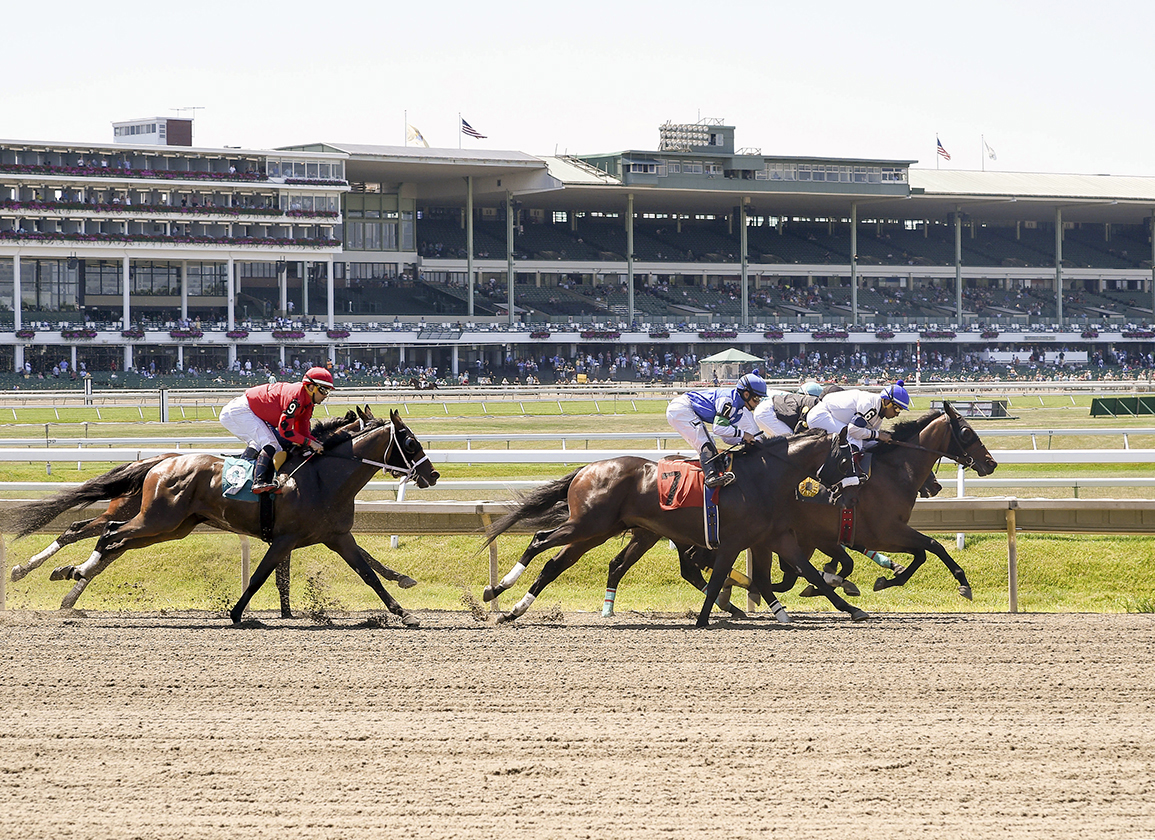By Bill Finley
Total all-sources handle at the Monmouth Park meet, which wrapped up Sunday, Sept. 26, showed an increase, hardly a surprise since this year's season included 11 more cards than the 2020 meet, which was shortened due to COVID-19 issues. Monmouth didn't fare nearly as well in the more relevant category of daily average handle. During this year's 55-day meet, average daily handle was $3,154,748, a decline of 17.13% over 2020 figures, when the average handle was $3,807,082. The 2020 Monmouth meet consisted of 44 cards.
The decline begs the question: did some gamblers stay away because of the controversial ban of the whip?
The Monmouth meet was the first in North American racing where whipping in order to encourage the horse was banned, a rule put into place by the New Jersey Racing Commission prior to the meet. Some believed that the lack of whips created an unknown factor that would make handicapping the races a bit of a crapshoot and keep horseplayers away.
“It's difficult to say,” Monmouth's Dennis Drazin said when asked about the impact of the whip ban. “A number of the whales I spoke to told me [the whip ban] was a factor why they weren't betting. There were a number of people who were mixed on the whip rule. Some people said they were uncomfortable with the whip rule and couldn't bet serious money. They told me they might bet a race because they wanted to have a good time and have some action. But they just bet less and didn't make huge bets on those races. I'm sure the whip ban had some effect on our handle, but if I tried to quantify it, I don't know that I could.”
Drazin said several other customers told him they altered the way they handicapped the Monmouth races. One theory is that front-runners would do better in whipless races because jockeys had no means to encourage closers to run their best in the latter stages of the races.
“A lot of others told me they just handicapped differently,” he said. “They cashed a lot of bets because they read the form and they knew what the horses's style would be like. Whatever their philosophy might have been about betting the front-runners, I saw a lot of closers win. too.”
Drazin said that as the meet went on he sensed that everyone, including bettors, seemed to grow more comfortable with the new rules regarding whipping.
“A lot of people, people who were watching our races very carefully, including the heads of a lot of other racetracks, said they thought in the beginning that the rule was very controversial,” he said. “They thought by the end of the meet, no one was talking about it. No one even noticed anything was different.”
Drazin also pointed to problems keeping the races on the grass, particularly early on in the meet. The first 15 races scheduled for the turf were all moved to the main track.
“I think the handle was down because of the weather,” he said. “When it rains, you just get decimated. We had a lot of races come off the turf. Plus, you have to plan for the weather. When you know it's going to rain over the weekend you're not going to write a bunch of turf races.”
While it is unlikely that the New Jersey Racing Commission will rescind the whip rule on its own, Drazin said there could be major changes as early as next July. That is when the Horseracing Integrity and Safety Act (HISA) is supposed to go into effect. Under HISA, it is expected that there will be uniform rules throughout the country, including rules covering the whip.
“What I think will happen is that HISA will take effect next July and they will have a uniform whip rule and New Jersey will have the same rule everyone has,” he said. “My understanding is that HISA's rule will most likely be the same as the rule in Kentucky and then every state in the country will use the same rule. If that happens, the discussion about our not allowing whips will be moot.”
The Kentucky rule limits sets a limit of six overhand hits per race with no more than two strikes in succession.
Not a subscriber? Click here to sign up for the daily PDF or alerts.






